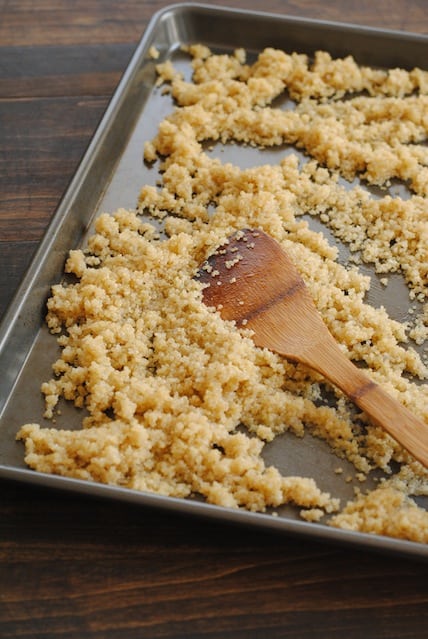Culinary School Lesson: The Danger Zone
In my “What I Learned in Culinary School” series, I’ll be sharing tips and tricks that I learned from two years of working with some of the country’s best chefs. This will include big things like learning to work efficiently, and small things like how to cook bacon perfectly. All of them will be applicable to your home kitchen, making you a faster, better, and more confident cook.
See what I did with the title there? Yes, I may or may not have seen Top Gun in 3D earlier this year. And the volleyball scene was as excellent as always.
But really, what I want to talk about today is getting your food out of the danger zone. Quickly. The range of temperatures between 40º and 140ºF is known as the “temperature danger zone,” and it’s at these temperatures that food-borne bacteria that can make you sick are most likely to grow and multiply.
There’s really no need to be scared! The most important thing to remember is that if you make a big batch of hot food (soup, grains, pulled pork, etc.), and you’re planning on packaging up leftovers to refrigerate or freeze, you want to cool it down as quickly as you can. The quicker you can get that food to 40º, the less likely it will be that bacteria will grow. While culinary schools and restaurants have huge walk-in refrigerators with racks upon racks of trays to cool food on, this is easy to do at home.
For most hot foods, the simplest way to do this is by transferring the food from its cooking vessel into a shallower pan, instead of cooling it in its cooking vessel. Like so, with this big batch of quinoa I made. I cooked it in a big saucepot, but then transferred it to this rimmed baking pan:

I spread it out on the pan, and then popped the whole pan in my refrigerator until it was completely cool. Then, I transferred it to a storage container for re-heating later in the week.
Don’t stress – you probably have more time than you think to cool your food. You want to cool it down to 70ºF within two hours. After that, you have four more hours for the food to cool to the final 40ºF or less.
The Kitchn recently had a great article about what happens when a health inspector visits a home kitchen. There’s some good tips in there, including some more info about the temperature danger zone.

